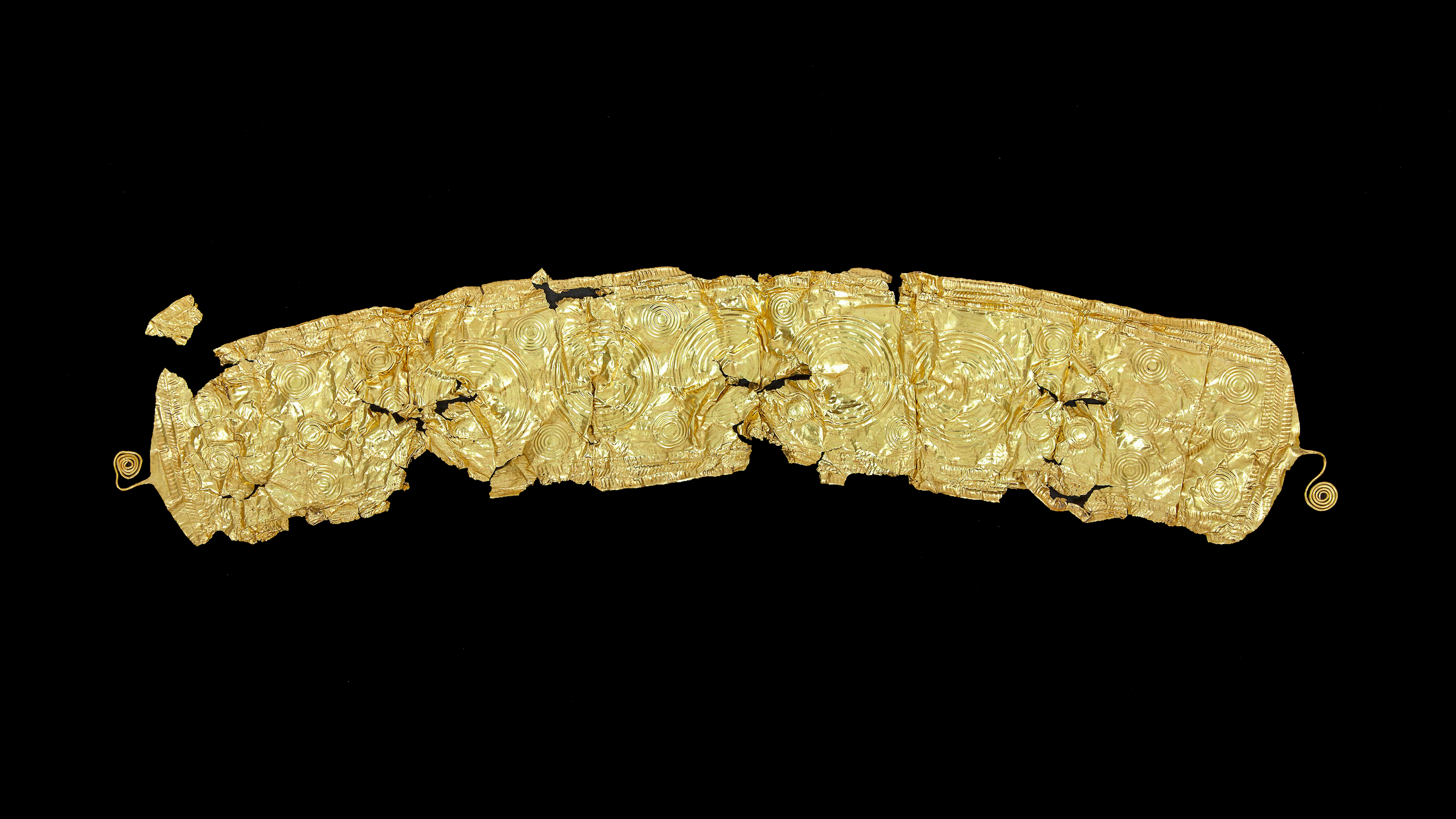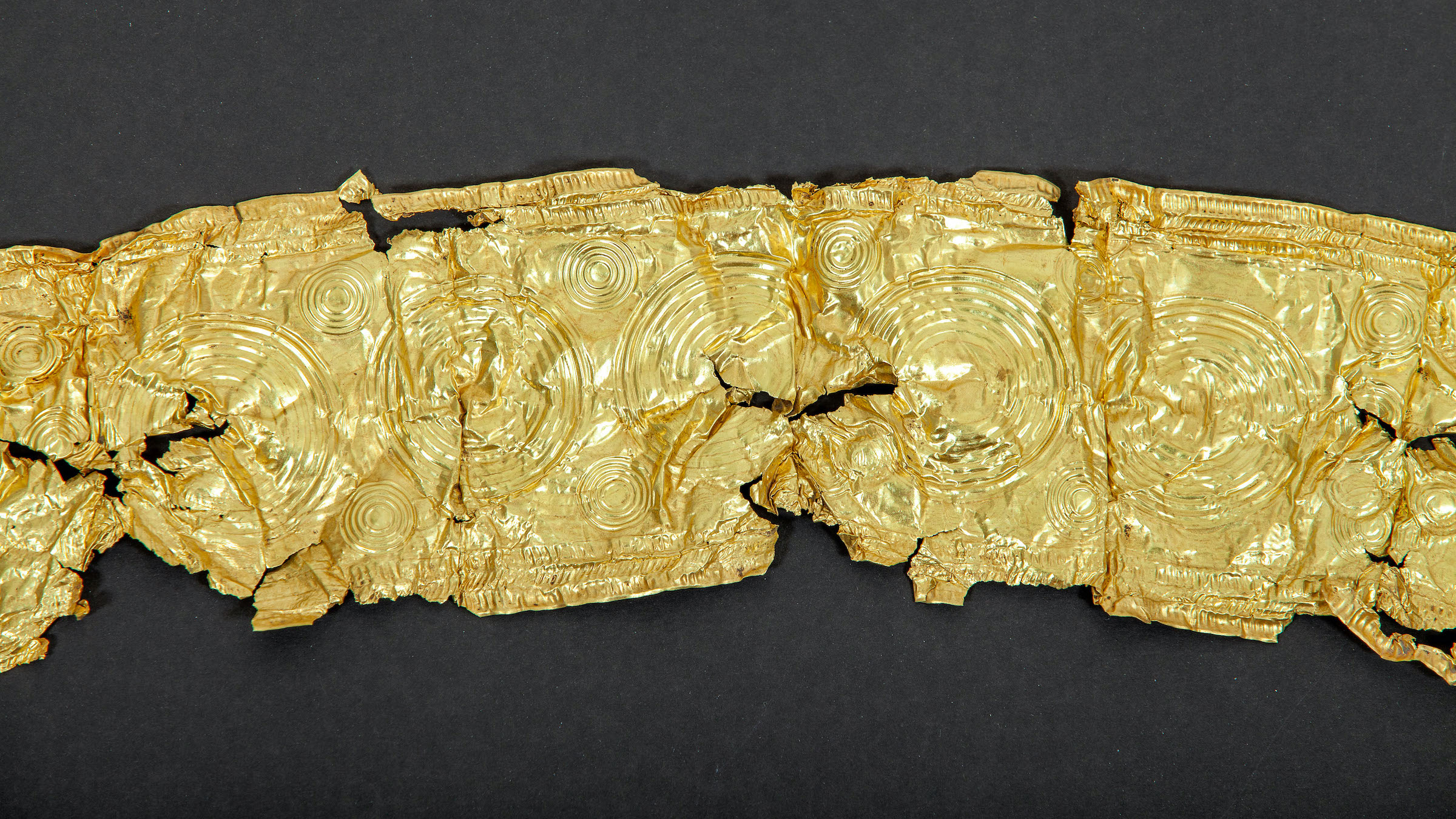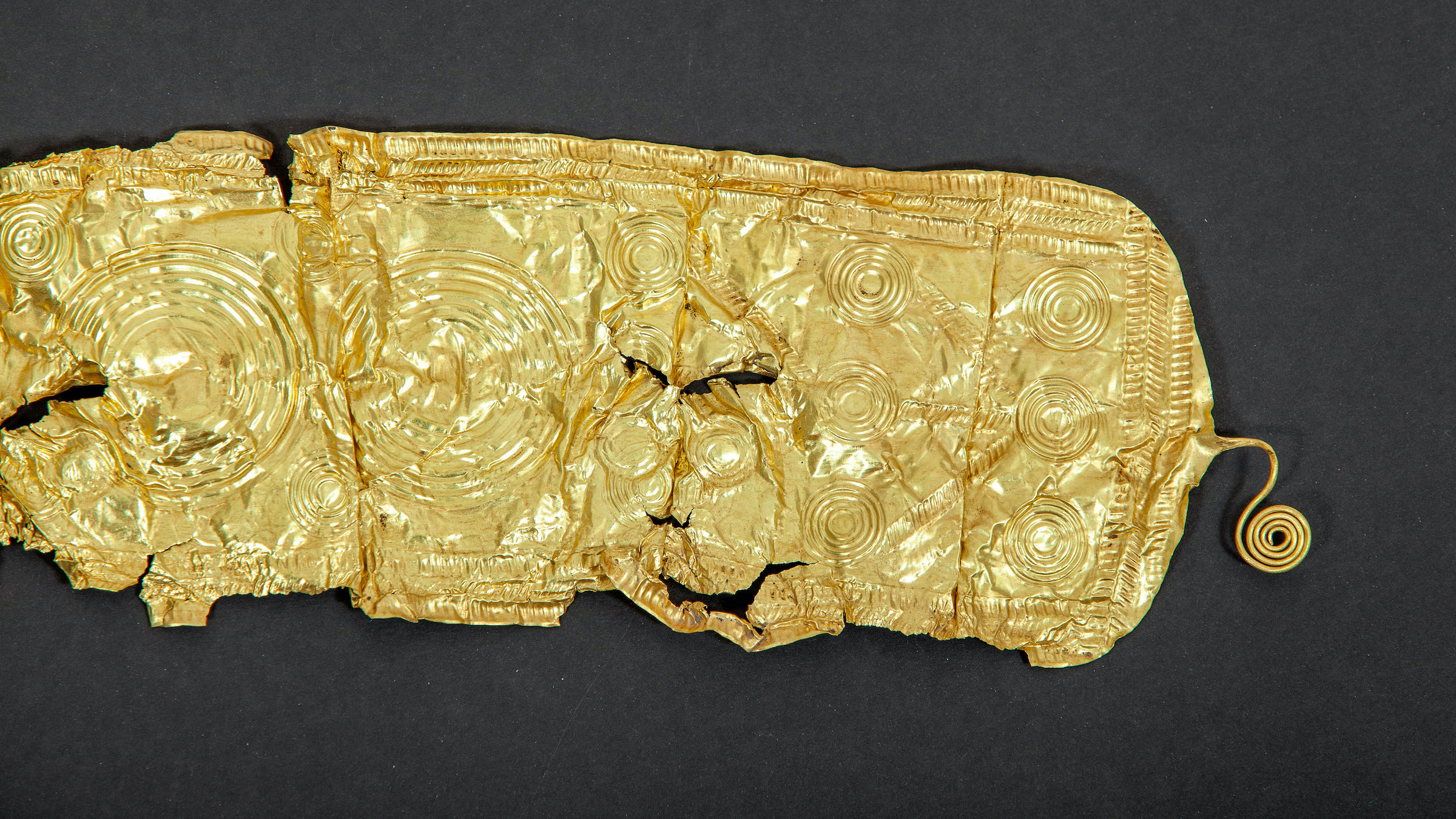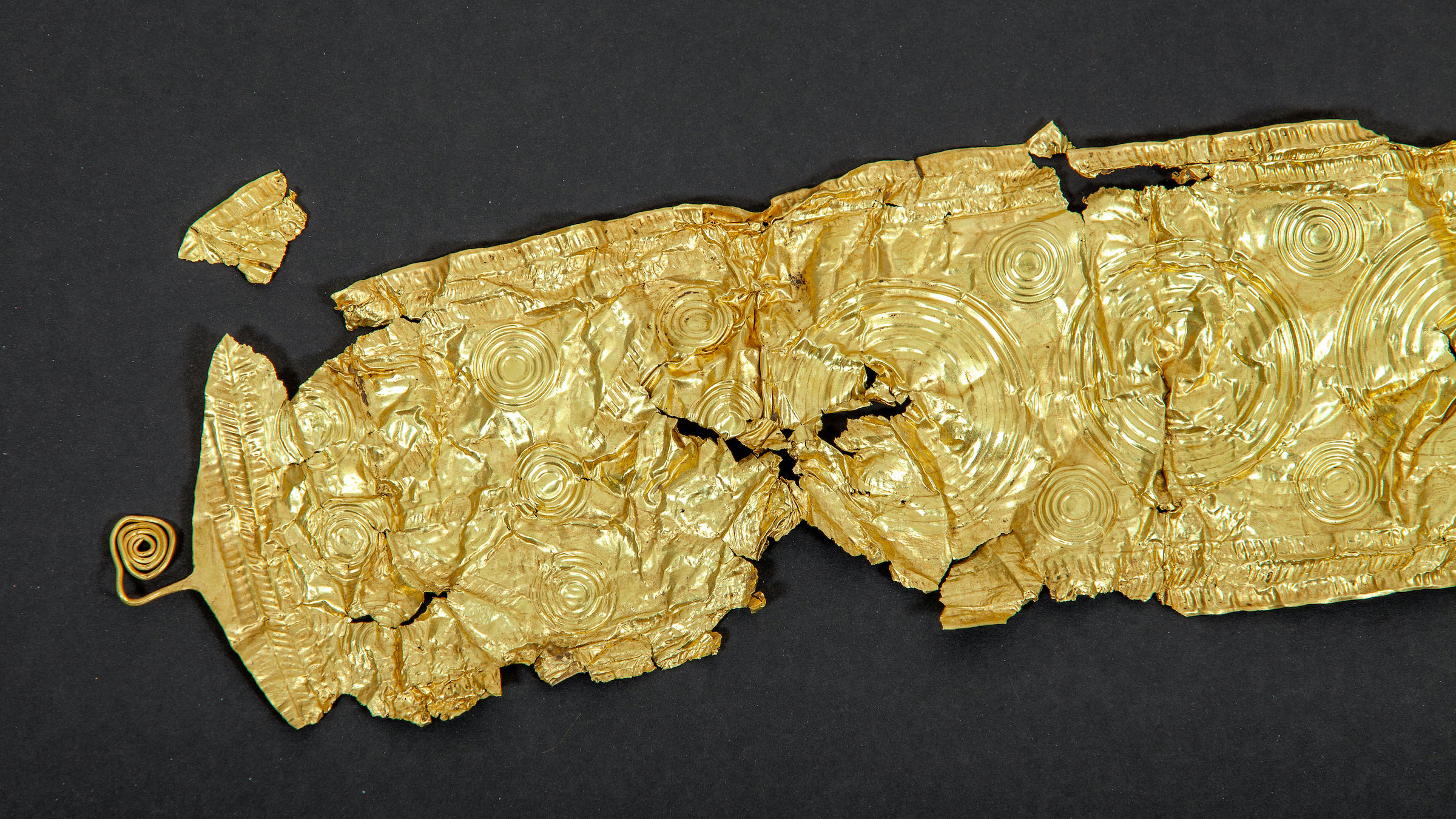Bronze Age gold belt with 'cosmological' designs unearthed in Czech beet field
A beet farmer discovered an ornate Bronze Age gold belt on his land in the Czech Republic.

A beet farmer in the Czech Republic got the surprise of his life last month when he unearthed a thin, crumpled sheet of gold that turned out to be nearly 2,500 years old. The ornate object was covered in dirt but well preserved, inspiring the farmer, who wishes to remain anonymous, to send photos to archaeologists at the nearby Silesian Museum in Opava.
Jiří Juchelka, head of the Silesian Museum's archaeology department, told Radio Prague International (RPI) that the 20-inch-long (51 centimeters) object — made out of gold with inclusions of silver, copper and iron — was likely the front of a leather belt. "It is decorated with raised concentric circles and topped with rose-shaped clasps at the end," he said in an interview with RPI. "It may be missing a few tiny parts, but otherwise, it is in perfect condition."
Conservator Tereza Alex Kilnar has started work on stabilizing and analyzing the belt at the Museum Bruntál, in collaboration with other specialists. Based on the style of the decoration, she estimated that the gold belt dates to the middle to late Bronze Age, around the 14th century B.C.
Central Europe during this time (2000 B.C. to 1200 B.C.) was an amalgamation of different cultures connected by a vast exchange network. Supported by subsistence farmers who grew wheat and barley and kept domesticated livestock, society became more complex, with a hierarchy forming between the poor farmers and the wealthy political and economic elite. Archaeological evidence points to people living in timber-frame houses early in the Bronze Age and transitioning to larger settlements by the middle of the time period.
Related: Face of wealthy Bronze-Age Bohemian woman revealed in stunning reconstruction



While the Bronze Age is known for its abundance of bronze artifacts, raw materials such as gold were also traded and made into prestigious items for the elite. Archaeologists have found gold objects in high-status graves in Bronze Age Central Europe. But gold items also have been discovered in hoards in special, isolated locations, suggesting a kind of gift exchange between the cultural elite and the supernatural.
Not much else is known about the context of the gold belt yet, since it was just recovered in late September. "We can't truly say" if the object was part of a larger feature like a burial or hoard, Kilnar told Live Science by email, "because the belt was discovered on the surface." She suggested that "conducting some type of archaeological research is currently under consideration, and we are discussing it with other institutions." Kilnar told RPI that the belt likely "belonged to someone in a high position in society, because items of such value were rarely produced at the time."
Sign up for the Live Science daily newsletter now
Get the world’s most fascinating discoveries delivered straight to your inbox.
Australian National University archaeologist Catherine Frieman, whose research specialty includes studies of metalworking in the European Bronze Age, agreed that the owner of the gold belt was someone of high status, either social or spiritual. The Bronze Age "saw a really extraordinary flourishing of metalworking practice, including very ornate goldworking, and wide distribution of elaborate gold objects in central and western Europe," Frieman told Live Science in an email. "Gold objects with circular motifs are often linked to Bronze Age cosmological systems believed to focus on solar cycles."
While the decorative motifs have yet to be fully studied, the importance of the gold belt is already clear. "It's rare to find ornaments of this type and fragility this intact," Frieman said, because "sheet gold tears like paper. It is rare for special gold finds to emerge during excavation."
"It is a really unique discovery," Kilnar told RPI, "not only in our region, but all over the Czech Republic." After the belt is studied and conserved, Museum Bruntál plans to display it for the public.

Kristina Killgrove is a staff writer at Live Science with a focus on archaeology and paleoanthropology news. Her articles have also appeared in venues such as Forbes, Smithsonian, and Mental Floss. Killgrove holds postgraduate degrees in anthropology and classical archaeology and was formerly a university professor and researcher. She has received awards from the Society for American Archaeology and the American Anthropological Association for her science writing.









